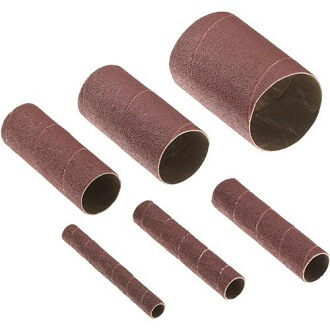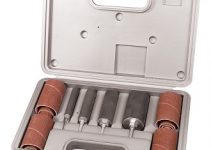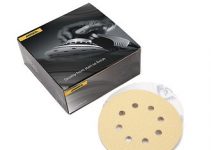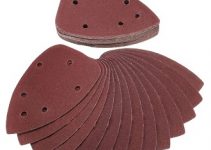-
Build Quality
-
Features
-
Price
User Review
( vote)An oscillating spindle sander is commonly used in a wide range of applications to make a smooth finish, cut round shapes, or remove paint depending on the grit of the sleeves.
Upon purchase, the sander usually comes with the pre-installed sander of a certain grit to treat your surfaces.
What happens when the grit has depleted, or what happens when the sanding sleeves are inefficient for a certain project because of the type of grit of the sleeves?
Obviously you need to replace the sleeves.
Now, this set of 6 sanding sleeves is one of the replacement sanding sleeves designed specifically for the W1831 Oscillating Spindle Sander.
>> Click here to see pricing, ratings, and reviews on Amazon.com. <<
These sanding sleeves are in sizes of ½, ¾, 1, 1-1/2, 2 and 3 inches.
They are furthermore in 240 grit, which is the finest of other grit levels of these sanding sleeves.
The 80 grit and 150 grit are also optional.
Because of the finest of the 240 Grit, these sanding sleeves are suitable for your smooth surfaces.
You therefore cannot aim on using them on rougher surfaces and then expect smooth surfaces quickly.
It might take long to do that, unless you use the lower grit first in order to remove much of the dirt.
The fact that these sleeves come in varying sizes also help you choose the right size in line with the task at hand.
>> Click here to see pricing, ratings, and reviews on Amazon.com. <<
Frequently Asked Questions
Can these sleeves fit into my WEN 6510 Oscillating Sander?
The first thing to look for is the size.
As for the grit, it depends on your preference in accordance with the task to be completed.
Well, having looked at that typical oscillating sander, I have realized that its standard sizes are 1/2, so these would be ideal too.
Can these fit on any oscillating sander?
My answer is that, you must check with the standard sizes of your sander first.
Not all oscillating spindle sanders are equal.
These were specifically created for the W1831 Spindle Sander.
Can I have a mix of 80, 150 or 240 grit of sanding sleeves in this package?
It doesn’t seem like the manufacturer would allow that.
Inquire first before making a purchase.
Otherwise you will have to purchase different package for each grit of the sleeves.
How do I know that which grit I should buy?
First start by assessing your task at hand.
For rougher surfaces, start by purchasing the 80 grit of sanding sleeves because they are effective in removing more dirty.
Then proceed to the 150 grit sleeves for some touch-ups as well before proceeding to the finer 240 grit sleeves.
It is still fine to jump a grit, from 80 to 240 grit sleeves.
 Jerry's Take
Jerry's TakeThese sanding sleeves are quite inexpensive and it takes a few days to be shipped.
In fact I bought all the packages from the 80 grit sleeves for my coarse applications to these 240 grit sleeves for a smooth finish.
They never disappointed me.
With these varying sizes of sanding sleeves, you can complete any task.
And despite being designed specifically for a specific spindle sander, they can fit in a variety of oscillating spindle sanders that have the same sizes.
>> Click here to see pricing, ratings, and reviews on Amazon.com. <<
Pros:
- They are inexpensive
- They can fit in a variety of spindle sanders
- Available in many sizes than fit a range of spindle sanders, and can complete varying tasks
- Perfect for a smooth finish with the 240 grit
Cons:
- Have to buy another grit for rougher surfaces
- Designed for a specific model W1831 spindle sander
The Steelex D3838 sanding sleeves are the best solutions for professionals in woodworking.
These sleeves are in 240 grit, meaning that you can tackle any surface for a smooth finish.
There is also an option to buy the 80 or the 150 grit sleeves for the treatment of rougher surfaces.
If you’ve just bought an oscillating spindle sander I recommend having these sleeves as well because either way you will have to replace the initial sleeves.
Good Luck!
>> Click here to see pricing, ratings, and reviews on Amazon.com. <<




